Railroad Commission Approves Toxic Waste Ponds Next to Baptist Camp
Texas regulators recently authorized a company to operate ponds to store and recycle millions of gallons of oilfield wastewater laced with toxic chemicals next to a Baptist summer camp in the Permian Basin.
The Richards Recycling Facility will store, treat and recycle produced water, a byproduct of oil and gas drilling, after obtaining a state permit on Jan. 30. Staff and board members at the Circle 6 Baptist Camp worry the facility will jeopardize their well water and expose campers to hazardous air pollution.
“I would be very alarmed if I was working at that Baptist Center,” said Dominic DiGiulio, a geoscientist who retired after a 25-year career at the Environmental Protection Agency and now consults for non-governmental organizations. “It’s a kind of chemical stew that’s going into these ponds.”
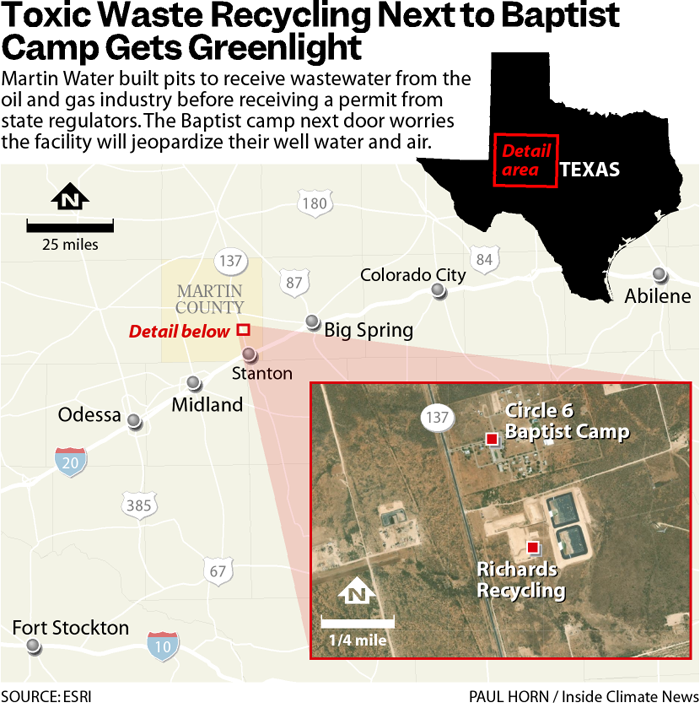
The company says the facility is necessary as drillers seek to reuse the wastewater instead of injecting it underground. Researchers have found that produced water in the Permian Basin contains radionuclides, volatile organic compounds like benzene and extremely high salt content. The open ponds of produced water would be just 500 feet from the children’s camp.
The debate highlights gaps in Texas regulations for produced water facilities. Residents living near other produced water ponds have pushed for stronger air quality standards and more protections for groundwater. While produced water ponds have been linked to groundwater contamination in Texas, Pennsylvania and California, regulations in Texas lag behind other states. Facilities automatically receive air quality permits from Texas regulators if they fit certain criteria, though neighbors often complain about harmful air pollutants once pits are operating.
State rules require companies to notify the Railroad Commission before beginning construction on stationary recycling facilities. Martin Water didn’t notify the RRC when construction began.
The Railroad Commission still issued Martin Water’s operating permit, even as the agency prepares to adopt stricter rules for oil and gas waste facilities for the first time in decades — the draft rules include setbacks that would require commercial recycling facilities to be at least 1,000 feet from residences.
Martin Water, based in Midland, did not respond to multiple requests for comment. Railroad Commission spokesperson Patty Ramon said the permit application fulfilled the agency’s requirements for groundwater protection and protecting the public from hydrogen sulfide exposure, but she did not address the company’s failure to notify the Commission when construction began on the facility, as required in state Rule 4.289.
Lawyers for Circle 6 Camp declined to comment.
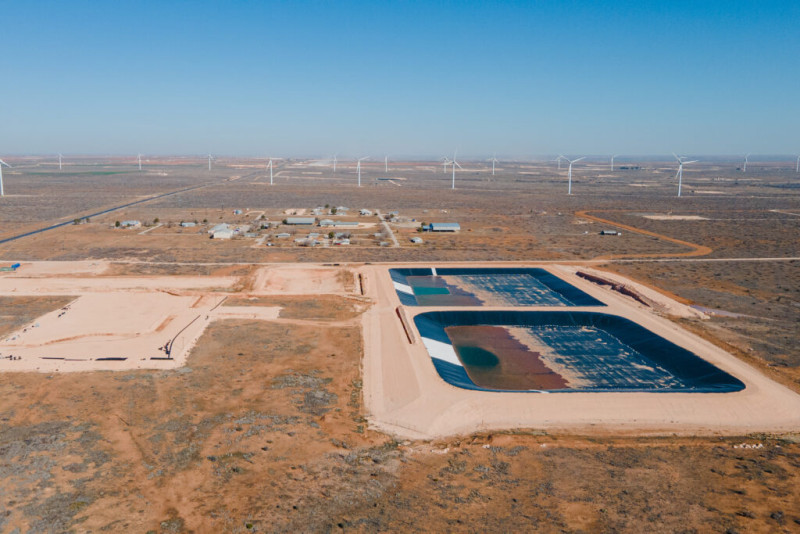
Baptist Camp Challenges Toxic Waste in its Backyard
In the Permian Basin, the nation’s biggest fossil fuel producing region, the most copious product of drilling in the Permian Basin isn’t oil or gas. It’s water.
Produced water, also known as saltwater, is a catch-all term for water that flows out of oil and gas wells. The byproduct can contain drilling chemicals injected into wells, toxic hydrocarbons like benzene, a known carcinogen, and water dislodged from deep underground that carries sediments and salts.
Most produced water in Texas is injected back underground in disposal wells. But since these wells have been linked to earthquakes, the Railroad Commission has restricted where oil and gas companies can inject produced water. The race is on to recycle more of it.
Martin Water Midstream is one of a growing cohort of companies that transport, store and recycle produced water. In 2022, the company broke ground at Richards Ranch next to the Baptist camp in Martin County.
The recycling facility will receive produced water via pipeline, treat it for reuse and then return it to drillers. The pits were dug and lined in 2022, but Martin Water has not yet transported produced water to the facility.
At a July 2023 hearing before an administrative law judge, Martin Water Midstream CEO Stephen Johnson testified that they began construction in April or May 2022 because that’s when contractors who could do the work were available. He acknowledged that they were “taking a risk” in building without an operating permit.
By the summer, Circle 6 Camp executive director Brian Colbath was well aware of the construction next door, which stirred up dust that blew over the camp. Colbath, his wife, and their four children live full time at Circle 6.
The camp hosts conferences and retreats year-round and welcomes hundreds of youth campers during the summer. Circle 6 has served Baptist churches in the Permian Basin for seven decades and moved to its current location in 1959.
“This summer we received multiple complaints from our groups and churches about the dirt pollution coming through camp,” Colbath wrote in an email to a representative of Martin Water in summer 2022, according to testimony at a later hearing. “I appreciate the efforts to recycle water and save the environment but not sure why it has come at the cost of the kids and the senior adults that use our facilities.”
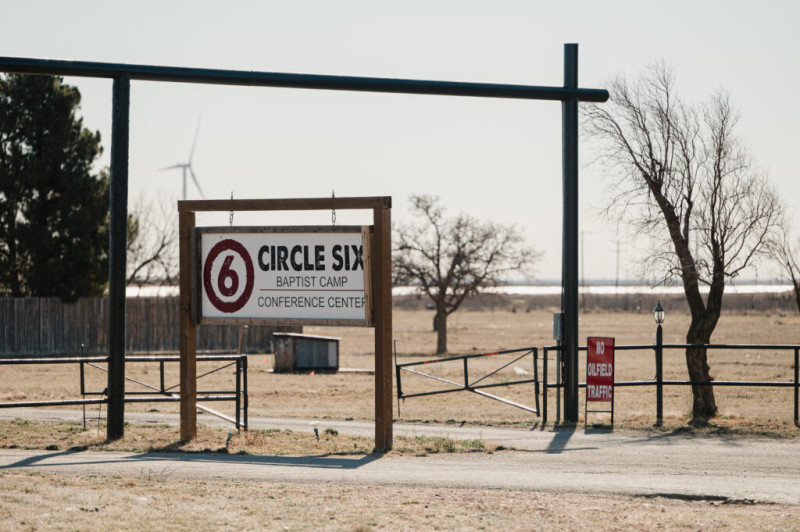
With the ponds already constructed, Martin Water submitted an application for an operating permit to the RRC on July 20, 2022. According to agency records, a Railroad Commission inspector visited the site the previous day and found it to be in compliance. The agency spokesperson did not respond to questions about what prompted this inspection.
Colbath and other camp staff and board members wrote letters to the Railroad Commission to formally protest the application and retained lawyers. The letters acknowledged the importance of local oil and gas drilling but questioned why the facility was located so close to a kids’ camp.
“We have so many concerns with this recycling facility dealing with ‘non-hazardous’ produced water,” Colbath wrote. “That sounds like an oxymoron considering all the information in the material safety data sheets we have pulled up.”
These data sheets list occupation safety and health concerns for chemicals and products.
The Railroad Commission granted Circle 6 standing to protest the application and scheduled the hearing for July 2023.
Safety of Produced Water Pits Debated
Circle 6 and Martin Water each presented their case during the hearing in Austin on July 24 and 25, before RRC Administrative Law Judge Alissa Zachary.
Circle 6’s lawyers argued the pit design would not adequately prevent contamination of the underlying Ogallala Aquifer and that residents and campers could be exposed to air pollution including hydrogen sulfide gas, which can be fatal. While other chemicals are present in produced water, the RRC has a specific rule requiring safeguards including training, signage and detection equipment at facilities where people could be exposed to hydrogen sulfide gas.
Circle 6 lawyers called West Texas A&M University environmental scientist and oil and gas remediation expert William Rogers as a witness.
“In my 40-some years, this is probably the worst siting that I’ve ever seen, as far as being close proximity to a camp, proximity to the groundwater, the potential risk and the unknowns,” Rogers testified. “I, quite frankly, was shocked at seeing the proximity of the camp to the facility.”
Martin Water said it will not accept produced water at the facility with detectable amounts of hydrogen sulfide. But Rogers countered that bacteria in the ponds would generate hydrogen sulfide gas. He said under the right conditions – cold temperatures, low winds – that gas could travel to the camp.
“I have heard testimony there will be absolutely no hydrogen sulfide. That’s virtually impossible,” Rogers said.
Martin Water’s attorneys argued that its precautions, including having employees wear hydrogen sulfide monitors, were sufficient.
Circle 6 Camp relies on water wells that tap into the Ogallala Aquifer, which is the largest in the nation. The Ogallala provides more water for Texas users, including farmers, towns and cities, than any other aquifer in the state, according to the Texas Water Development Board.
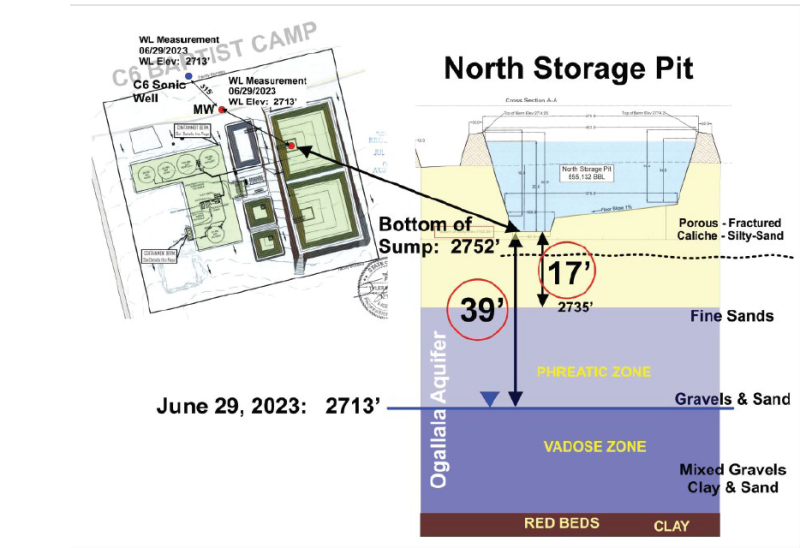
Martin Water testified that its double liner system would be sufficient to prevent contamination of the groundwater and that they will drill several monitoring wells.
Circle 6’s lawyers argued that building the pits on top of porous soil with no natural barrier between the lined pits and the groundwater could lead to contamination.
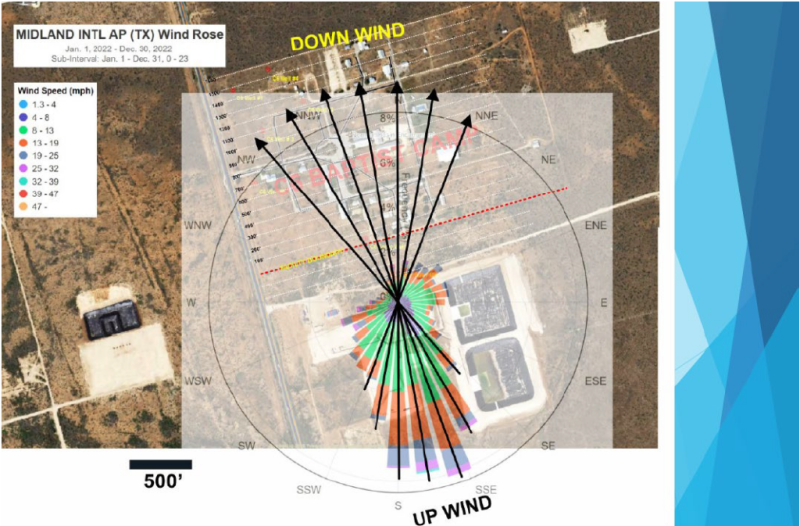
Zachary ultimately recommended that the agency issue the permit, stating that the agency does not have jurisdiction over air quality and that the design was “sufficient” to prevent water pollution.
Circle 6’s lawyers expressed disappointment. They wrote that agency staff “take Martin Water’s word” on disputed aspects of the application and have not conducted any independent investigation.
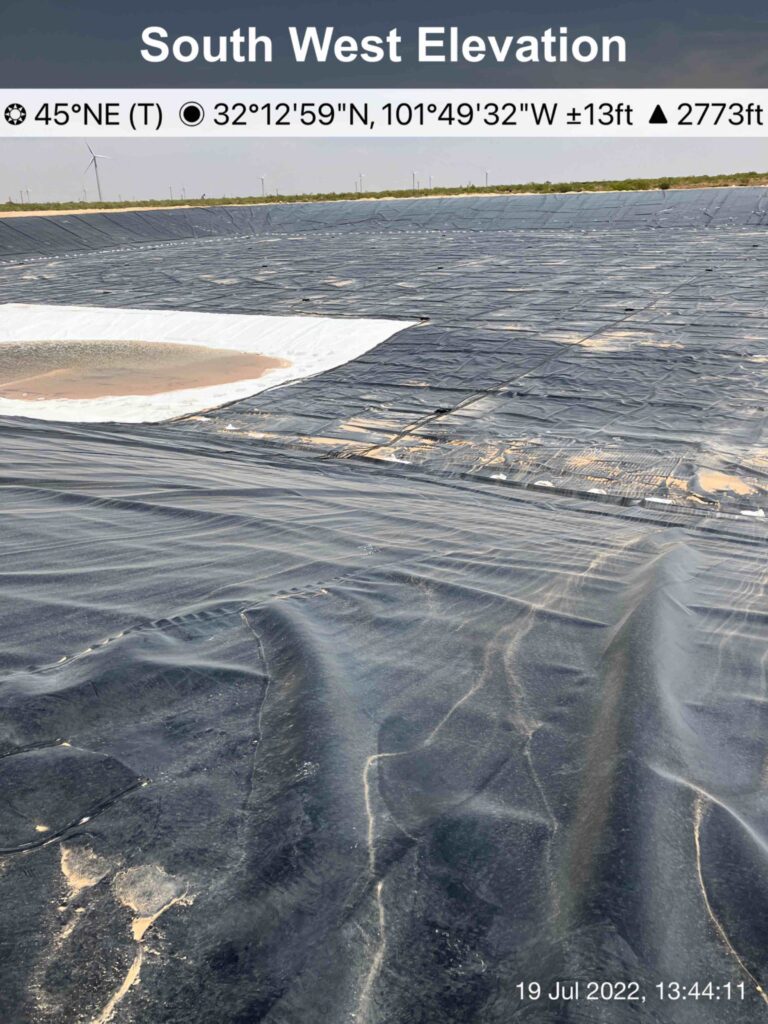
After Zachary’s ruling, the final decision rested with the agency’s three commissioners at the Railroad Commission open meeting on Jan. 30.
Martin County Commissioner Koy Blocker traveled some 300 miles to Austin to speak at the meeting. Blocker, who is also a volunteer firefighter, said the permit is based on the assumption that all rules will be followed.
“However, our fire department, our ambulances, and our sheriff’s department are called out on a regular basis because someone did not follow procedure or proper safety protocols,” he warned.
Blocker also said the facility’s air pollution and odors could drive Circle 6 out of business. “I do not believe that it is prudent practice to allow the new facilities to cause existing businesses or camps to go out of business as a result of the air quality,” he said.
Days earlier, an 11-year-old camper submitted a letter to the Railroad Commission, writing that Circle 6 “is a very important place” that he hopes “will be there for many years to come.”
After Blocker’s comments, the three commissioners approved the permit without qualifications.
Before the vote, Commissioner Jim Wright, an oil and gas waste disposal businessman himself, added what he called “a public request” that Martin Water move the proposed pits as far as possible from the camp, “in the interest of being a good neighbor.” Commissioner Wayne Christian echoed that request.
Virginia Palacios, executive director of Commission Shift, a nonprofit focused on reforming the Railroad Commission, said in a public comment shortly after that she was “concerned” by Wright’s comments.
“You can do more as commissioners to go back in these cases and require specific things of these companies,” she said. “You’re not taking advantage of your opportunity to do that, especially when it comes to childrens’ health.”
Wright’s spokesperson did not respond to questions about the commissioner’s remarks.
Scientists Study Impacts of Produced Water Pits on Air and Water
Communities around Texas have raised concerns about air pollution and other nuisances at waste pits. Research is still limited on the environmental impacts of waste pits, but states including Colorado, New Mexico and California have introduced setbacks and air emissions rules for waste pits to protect public health.
Nationally, produced water waste pits are not subject to rules that regulate hazardous waste even though the water can contain proven carcinogens. That’s because in 1988 the EPA deemed oil and gas wastes, including produced water, non-hazardous. This means that, unlike hazardous waste storage sites, produced water pits can be uncovered and regulators are not required to conduct air emissions monitoring.
While the chemical makeup of produced water varies in different oil and gas basins, researchers have found that produced water in the Permian Basin can contain volatile organic compounds (VOCs) like benzene, ethylbenzene, toluene and xylene, also referred to as BETX. DiGiulio, the former EPA geoscientist, explained that these VOCs will vaporize into gas.
“And then these VOCs, including benzene, a human carcinogen, are going to be moving downwind,” he said.
These chemicals can cause headaches after brief exposure, and more prolonged exposure has been linked to neurological damage and cancer.
Seth Lyman, an environmental scientist who directs the Bingham Research Center at Utah State University, studied emissions at produced water ponds in Utah’s Uinta Basin. His research informed the air emissions inventory for the region.
Lyman and his colleagues found that produced water ponds are a significant source of organic compounds, hydrocarbons and alcohols to the atmosphere. The research focused on emission levels at the pond surface, not public health impacts to local populations. But Lyman noted that Utah residents had raised concerns about the smells of gasoline and sulfur near ponds.
A 2020 report in California found that BETX emissions from produced water ponds represented one to two percent of the total air pollutants emitted in the San Joaquin Valley. The authors wrote the facilities could be “significant sources of emissions.”
Lyman said floating pond covers and systems that burn off vapors by flaring them are two options to reduce emissions at produced water ponds. “It is possible to do recycling with dramatically reduced air emissions,” he said. “But it’s just a lot more expensive.”
Groundwater contamination from produced water ponds and pits has been documented in several states. The Railroad Commission has identified groundwater contamination from benzene and chloride at McBride Operating’s Waskom waste facility in East Texas near the Louisiana state line where numerous spills and other violations had been documented.
An agency spokesperson did not respond to questions about the case, but a 2020 RRC memo states that benzene, total petroleum hydrocarbons, and chloride levels were increasing at a monitoring well downhill from the pits. In March 2020, benzene levels of 59.3 milligrams per liter and chloride levels of 2,380 milligrams per liter were recorded at the monitoring well. The EPA’s maximum level of benzene in drinking water is 0.005 mg/L. The EPA recommends keeping chloride levels below 250 mg/L in drinking water.
An attorney for McBride Operating said in a statement: “There have been oil and gas operations on the land where McBride Operating’s Waskom facility sits, dating back to the 1950s. Groundwater tests confirmed elevated levels of benzene before McBride’s operations commenced. McBride Operating takes environmental safety very seriously, which is why the floors of the waste management pits have at least 10” of reinforced concrete underlain by a 40-mil HDPE liner. These pits were properly permitted and have been inspected to ensure there are no cracks. In addition, the last two quarterly samples of the groundwater monitoring wells at McBride Operating’s Waskom facility showed that chloride levels are within specifications.”
Waste pits have also been linked to groundwater contamination in Texas, Pennsylvania, Wyoming and California. Range Resources was found responsible in 2020 for leaks at a produced water pit and storage pond that contaminated local residents’ water.
In Pavillion, Wyoming, the EPA studied the impact of fracking and unlined waste pits on groundwater. DiGiulio, the former EPA scientist, was one of the lead scientists and later published additional research linking oil and gas to contaminated groundwater in Pavillion. He has also documented groundwater contamination at unlined pits in California.
He said California makes location data readily available online, which aided his research. He said in Texas regulators would not provide him comparable location data.
“Texas presents problems for researchers trying to figure out what’s happening,” he said.
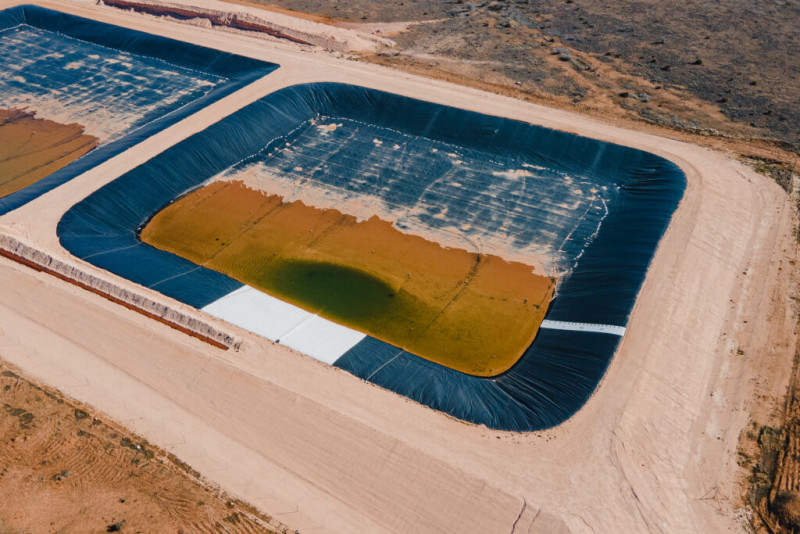
Waste Pit Rules Under Review
While the Martin Water facility moves forward, a larger debate is unfolding in Texas about the future of oil and gas waste facilities. The Railroad Commission is reviewing and updating its waste pit rules for the first time in decades. After informal public comments last year, the draft is now going through review before a formal comment period this year. The final version of the rule changes is expected later this year.
Palacios, with Commission Shift, said the RRC’s proposed rule changes include some improvements. Reserve pits, which drillers use to store waste at the well pad, will have to be registered for the first time. And under the current draft rules for commercial recycling, which includes the Martin Water site, facilities would have to be more than 1,000 feet from permanent residences.
Circle 6’s lawyers argued that if this rule were on the books today, the Martin Water permit would not be approved. They say this shows the location of the ponds is “completely unacceptable.”
Residents who live near a waste facility in Nordheim, Texas submitted public comments during the informal comment period last year that fumes are noticeable as far as one mile away from the pits. They argued that existing setbacks in the proposed rule changes are not sufficient.
Other states have adopted more stringent setback requirements. In Colorado, commercial waste facilities, which accept waste from multiple companies and tend to be larger, must be a full half-mile from residences, schools and other occupied structures. There must also be a gap of at least 20 feet between the bottom of the pit liner and groundwater.
In New Mexico, produced water recycling facilities cannot be within 1,000 feet of a permanent residence, school, hospital or church. There also must be 50 feet between the bottom of a pit and groundwater.
The proposed rule changes for Texas only include setbacks from residential dwellings for recycling facilities – not landfills or pits that are used to store produced water. The largest landfills would have to be 500 feet from any public water system well and 300 feet from any domestic water well. Texas has no requirements for the distance between the bottom of waste pits and adjacent groundwater.
And air pollution generated by produced water pits remains beyond the scope of the Railroad Commission rules. Most waste ponds qualify for a “permit by rule” from the Texas Commission on Environmental Quality, which enforces air pollution laws in Texas. The company must fulfill certain requirements and register the site with the TCEQ, but as long as those criteria are met, the TCEQ has no additional role in permitting. Under this system, any problems with air emissions are only investigated once the facility is already operating.
A TCEQ spokesperson recommended that individuals impacted by air pollution from waste pits file a complaint with the agency. TCEQ has followed up on complaints in places like Orange Grove, Texas, where residents have reported that fumes from the Blackhorn Environmental Services waste facility caused headaches, nausea and itchy eyes. TCEQ eventually sued the company in 2022 over violations of the Texas Clean Air Act, the Texas Solid Waste Disposal Act and Texas Water Code.
Palacios said this split jurisdiction between the two agencies stymies effective regulation of waste pits.
“If there are any problems with air quality and public health, that gets punted to the TCEQ,” Palacios said.
Palacios has called on the Railroad Commission to actively solicit feedback from impacted communities around Texas. Residents of places like Nordheim, Orange Grove and Paxton have raised concerns about waste pits in recent years, but the only public, in-person hearing on the draft rules was held in Austin, hundreds of miles from many impacted communities.
“At the end of the day there is nothing standing in the way between a polluting facility and the people who live next to it,” she said.
Share this article
Disclaimer: The copyright of this article belongs to the original author. Reposting this article is solely for the purpose of information dissemination and does not constitute any investment advice. If there is any infringement, please contact us immediately. We will make corrections or deletions as necessary. Thank you.







